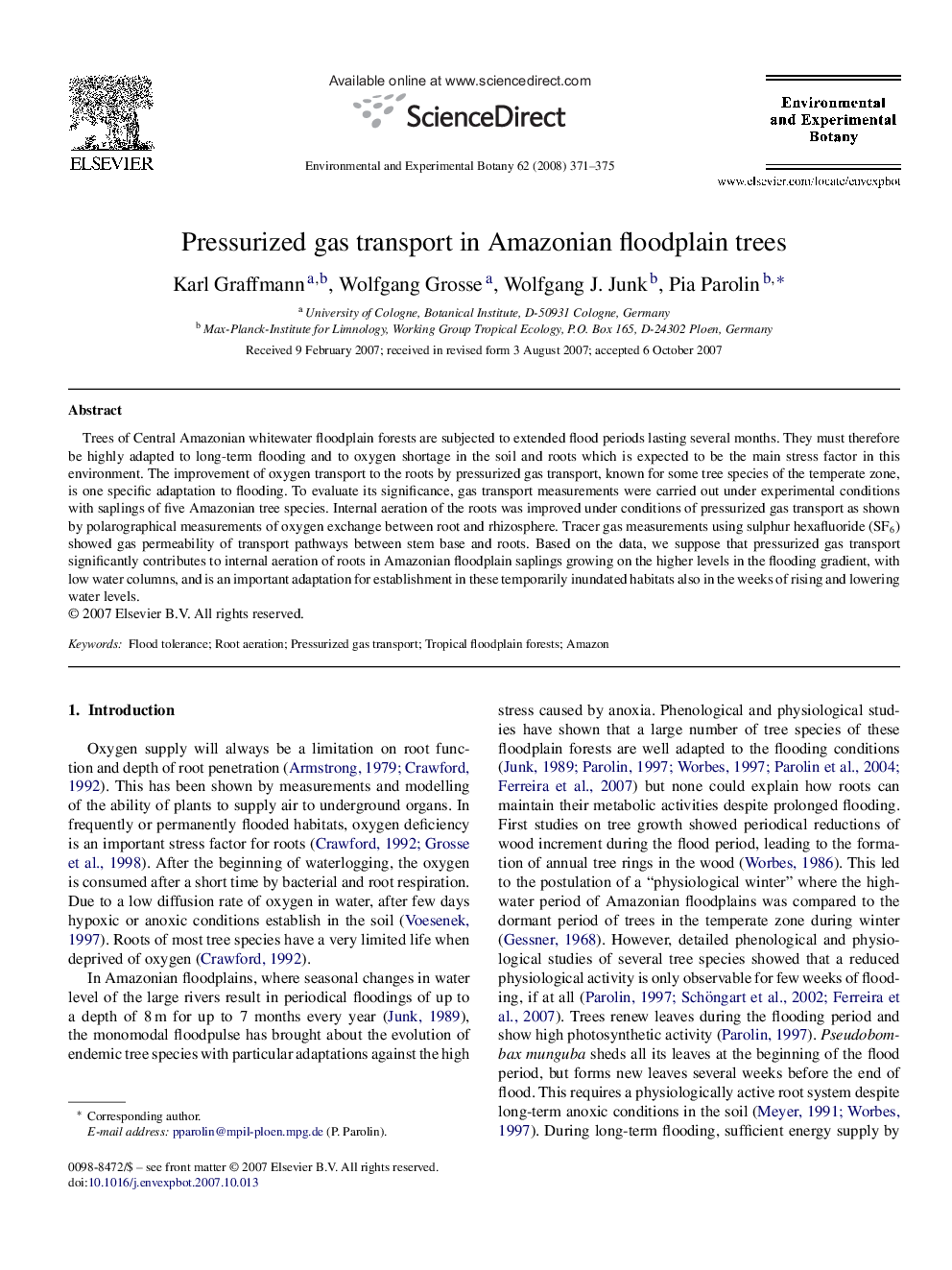| Article ID | Journal | Published Year | Pages | File Type |
|---|---|---|---|---|
| 4555449 | Environmental and Experimental Botany | 2008 | 5 Pages |
Trees of Central Amazonian whitewater floodplain forests are subjected to extended flood periods lasting several months. They must therefore be highly adapted to long-term flooding and to oxygen shortage in the soil and roots which is expected to be the main stress factor in this environment. The improvement of oxygen transport to the roots by pressurized gas transport, known for some tree species of the temperate zone, is one specific adaptation to flooding. To evaluate its significance, gas transport measurements were carried out under experimental conditions with saplings of five Amazonian tree species. Internal aeration of the roots was improved under conditions of pressurized gas transport as shown by polarographical measurements of oxygen exchange between root and rhizosphere. Tracer gas measurements using sulphur hexafluoride (SF6) showed gas permeability of transport pathways between stem base and roots. Based on the data, we suppose that pressurized gas transport significantly contributes to internal aeration of roots in Amazonian floodplain saplings growing on the higher levels in the flooding gradient, with low water columns, and is an important adaptation for establishment in these temporarily inundated habitats also in the weeks of rising and lowering water levels.
